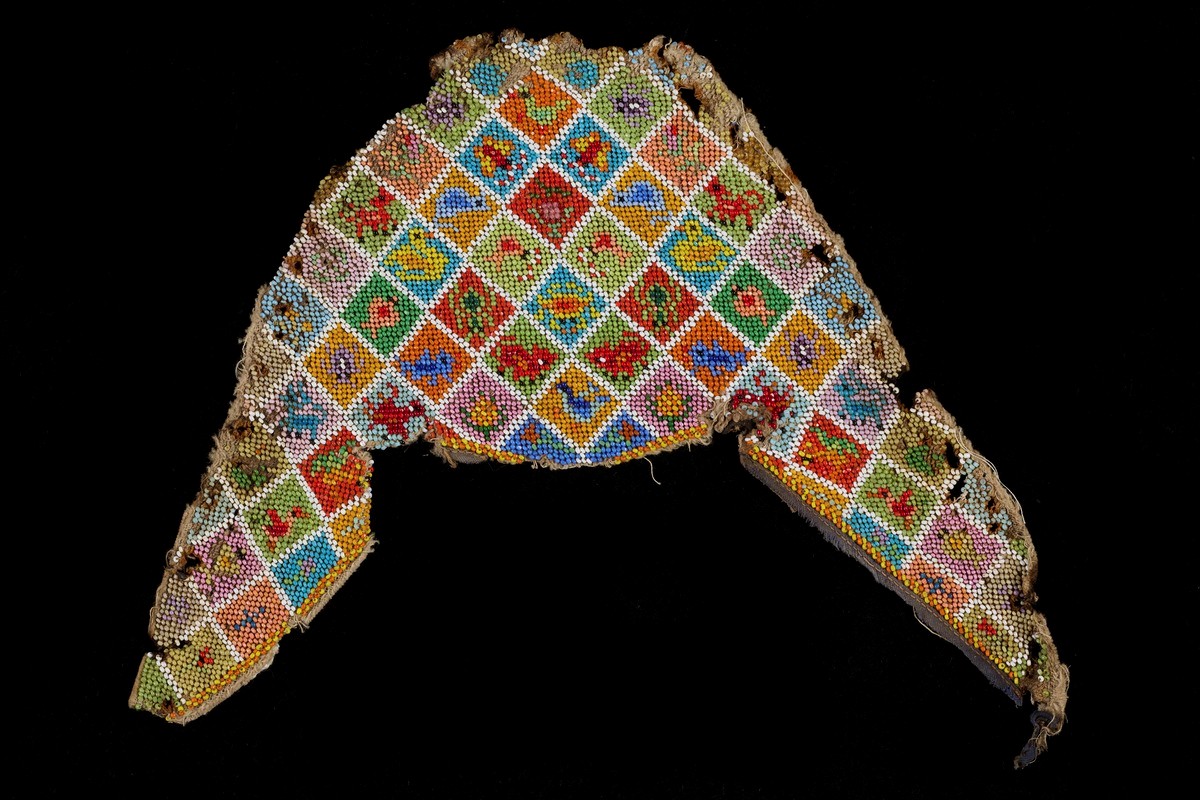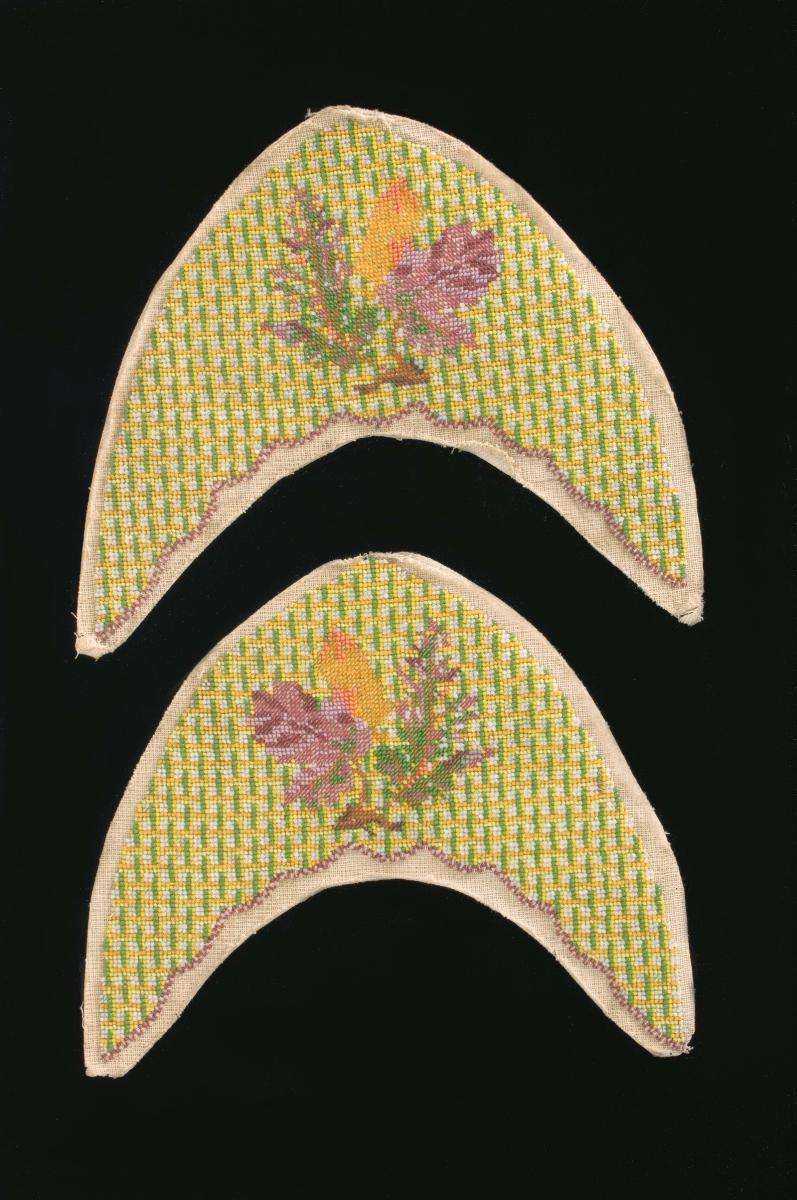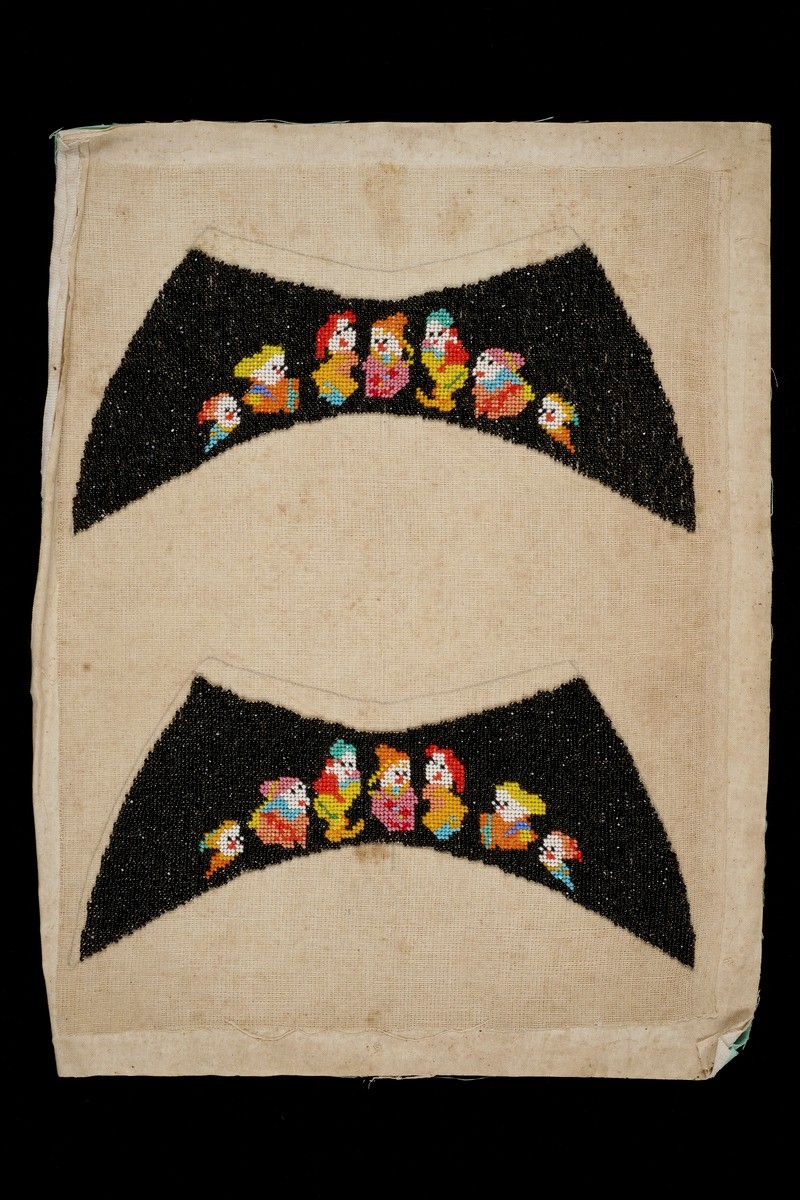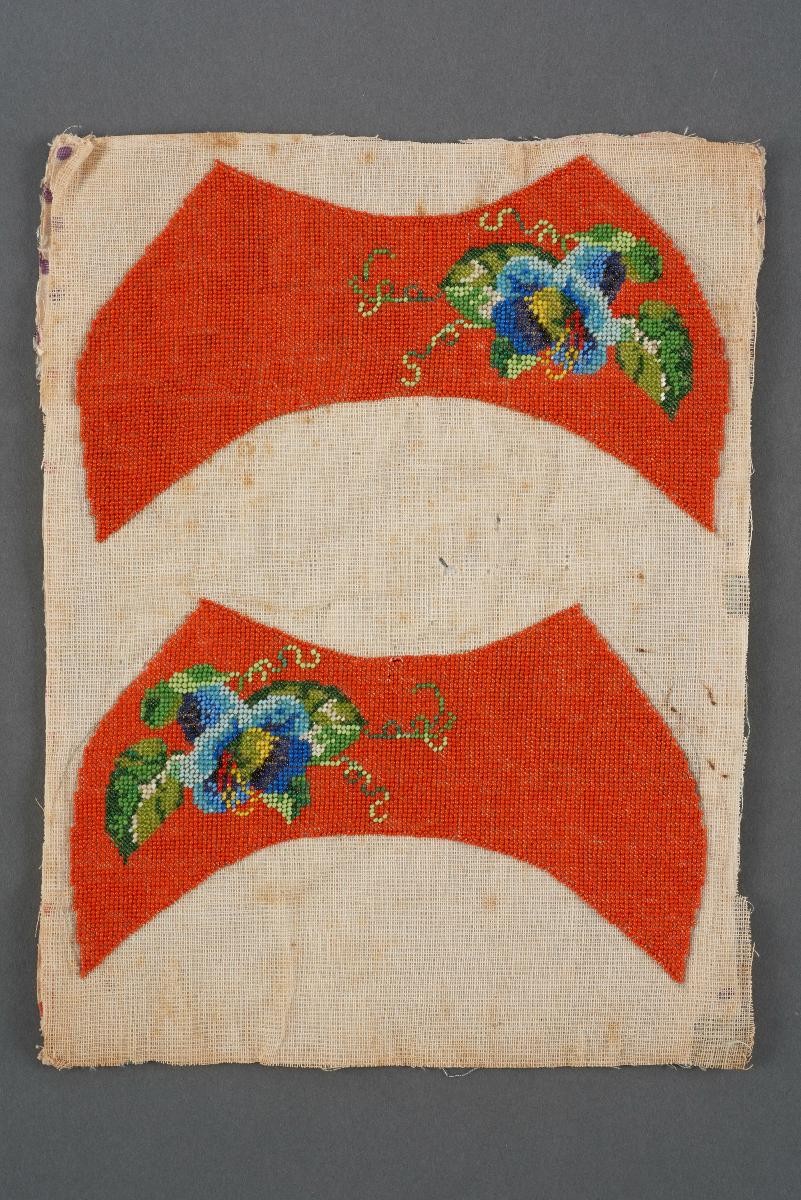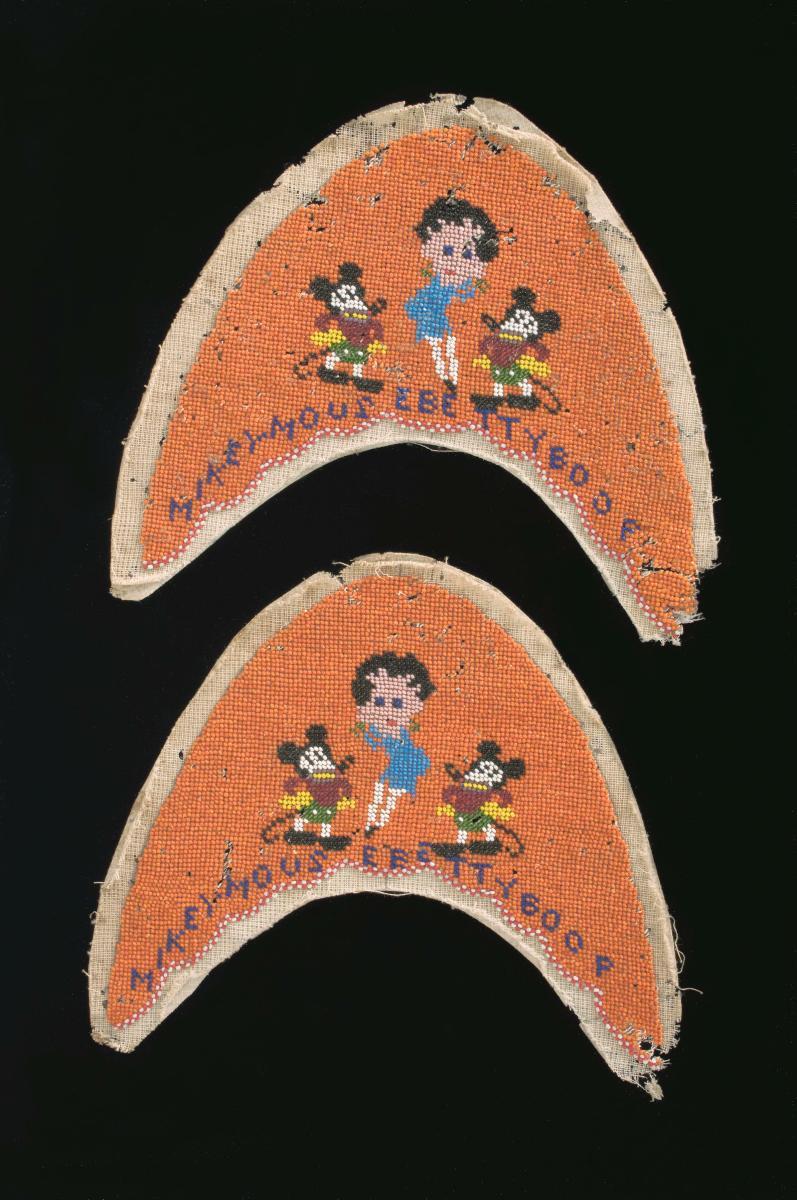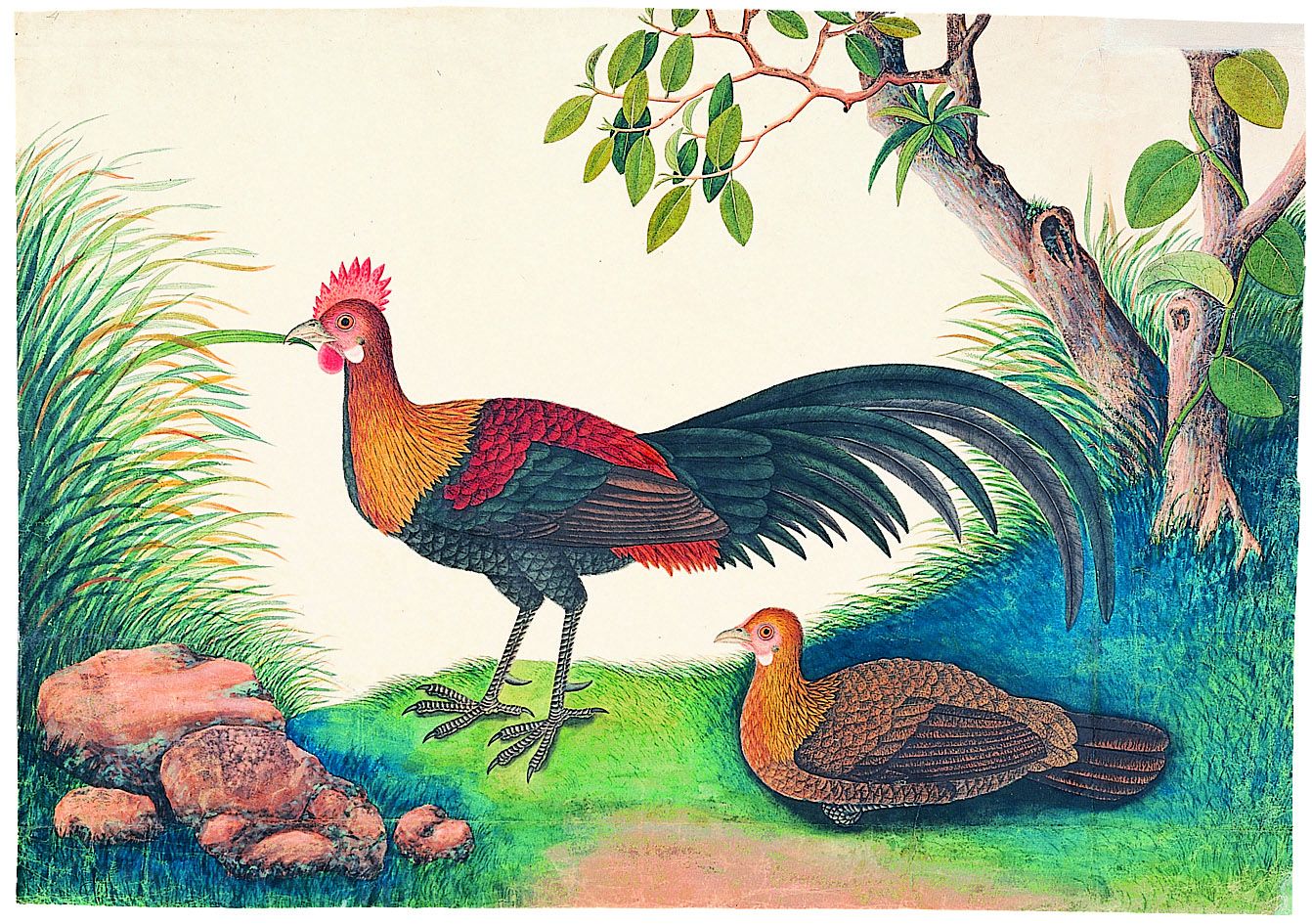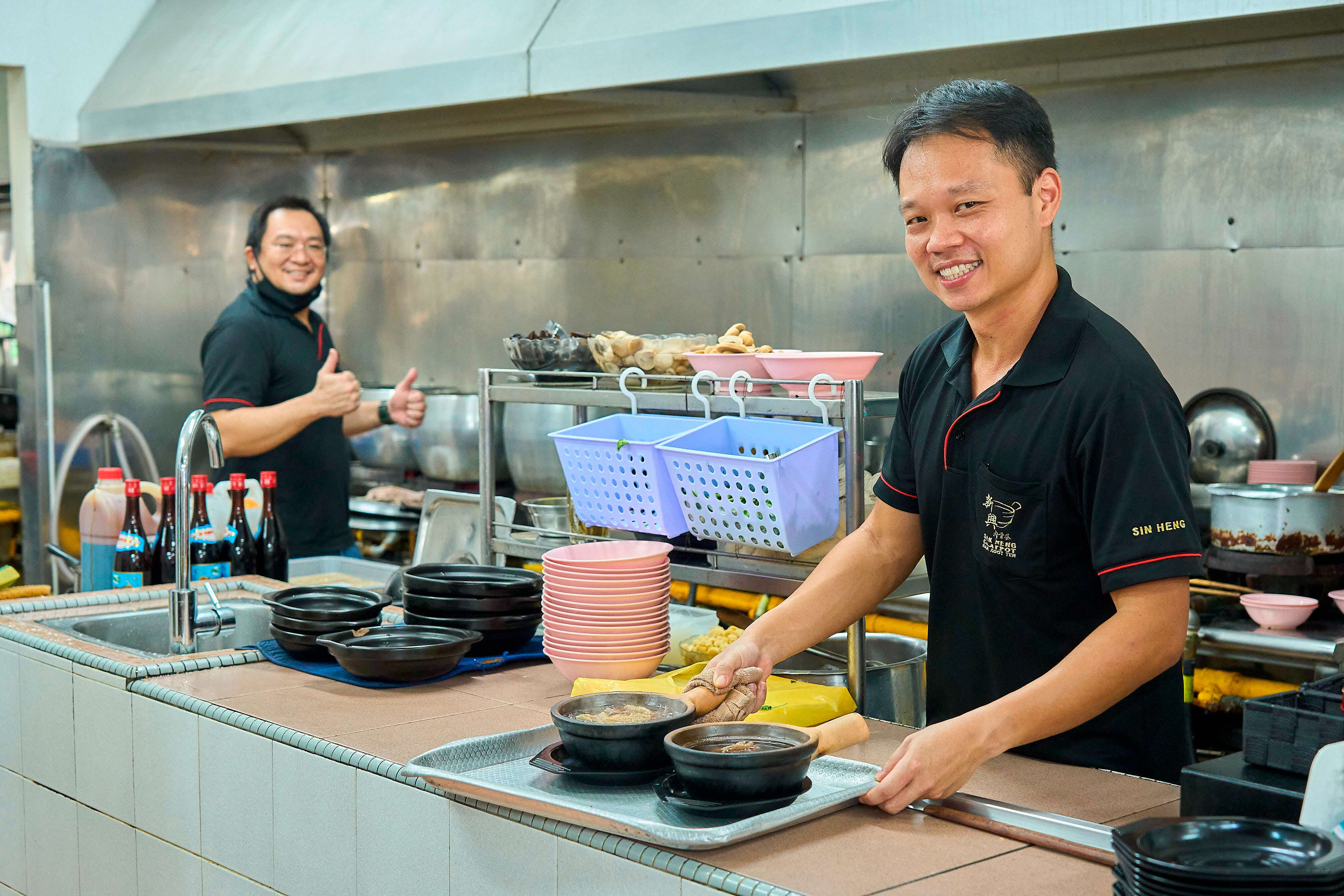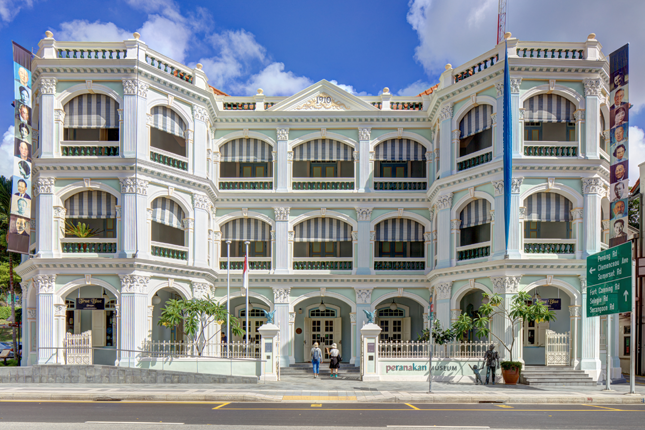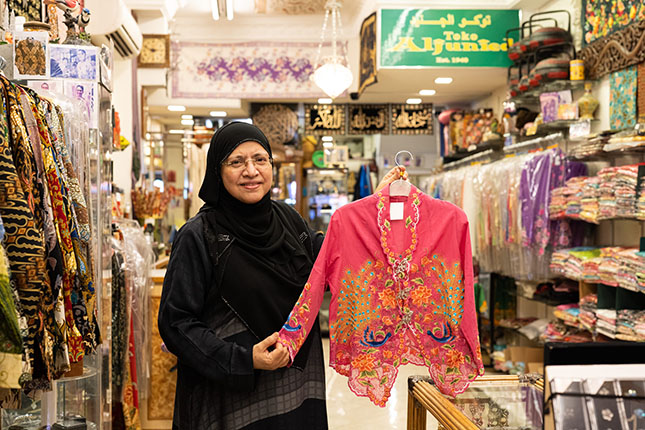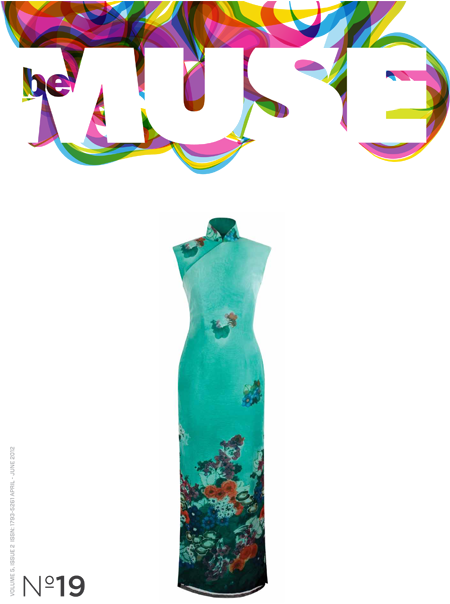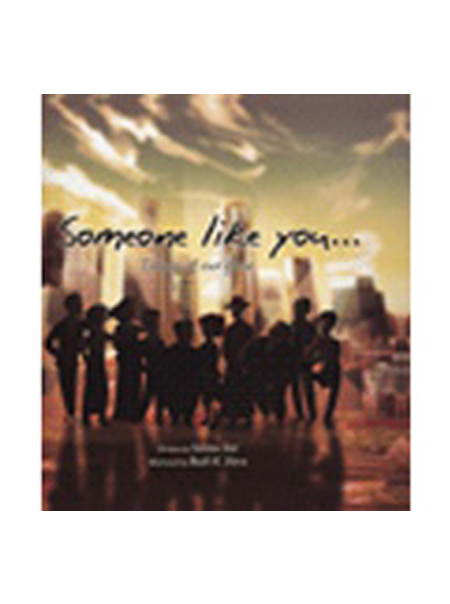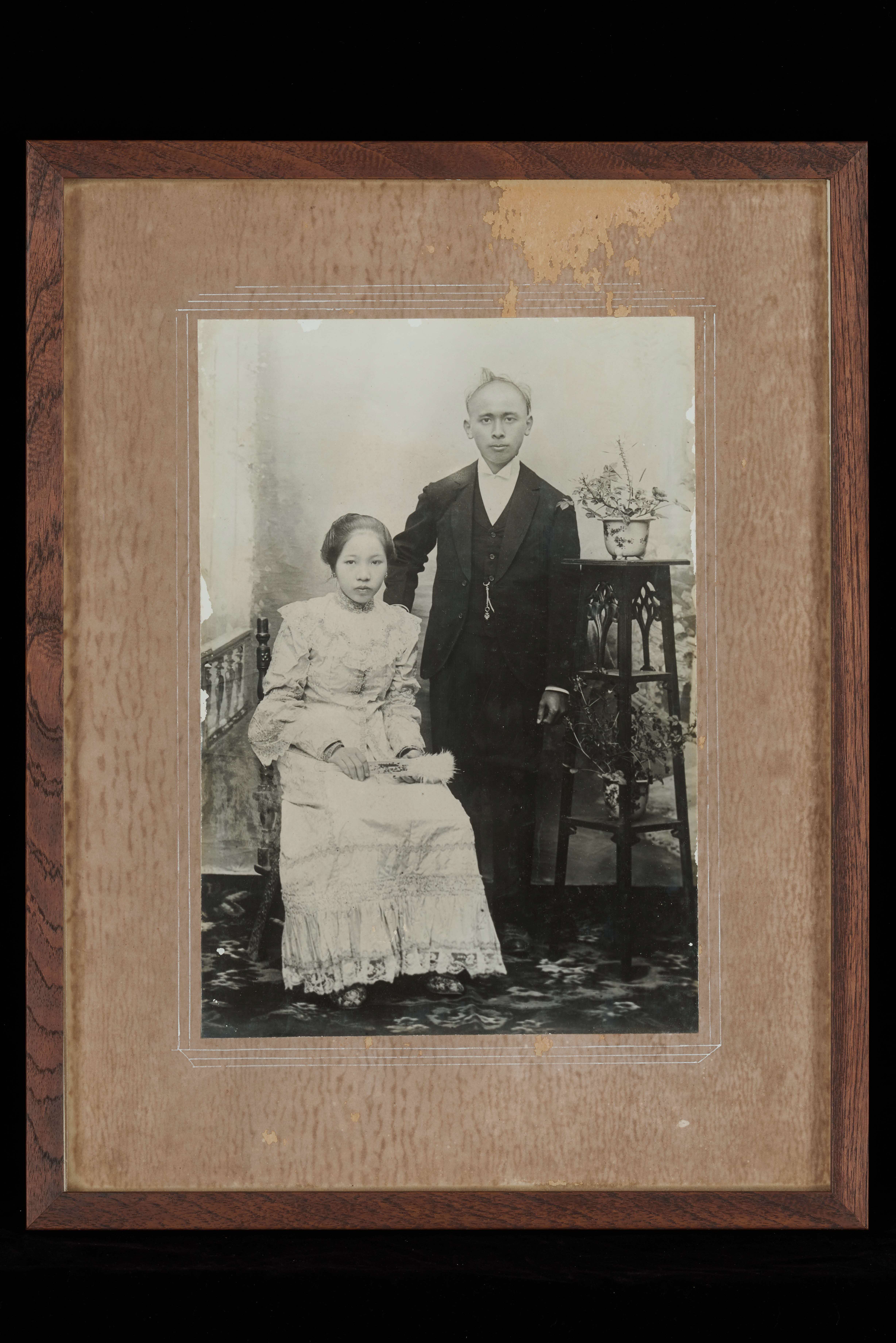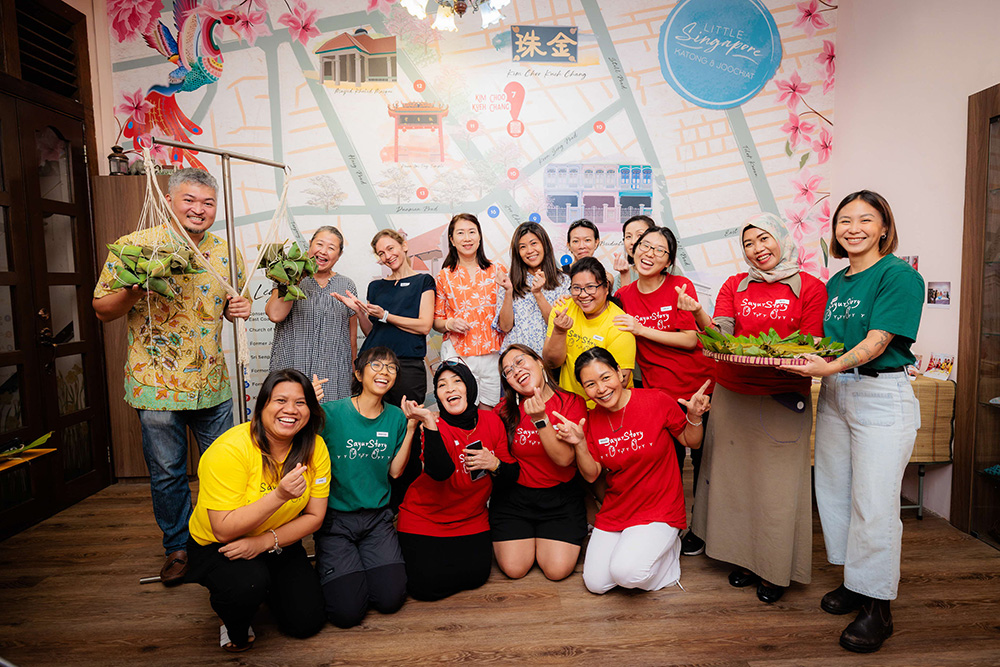The slipper face is decorated with a design known as “anak-anak” or “lao chien”, which consists of a range of motifs including crabs, ducks, mice, butterflies and flowers, arranged in a grid. European glass seed beads were mass-produced from the late 15th century. Venice, Bohemia, and Lyons were well known centres of bead production in the early 20th century. These beads, together with other needlework supplies could be purchased from the itinerant haberdasher, the "jarong man", who travelled from house to house hawking his wares. Slipper faces were often sewn at home before they were sent to the shoemakers to be made up into slippers.




